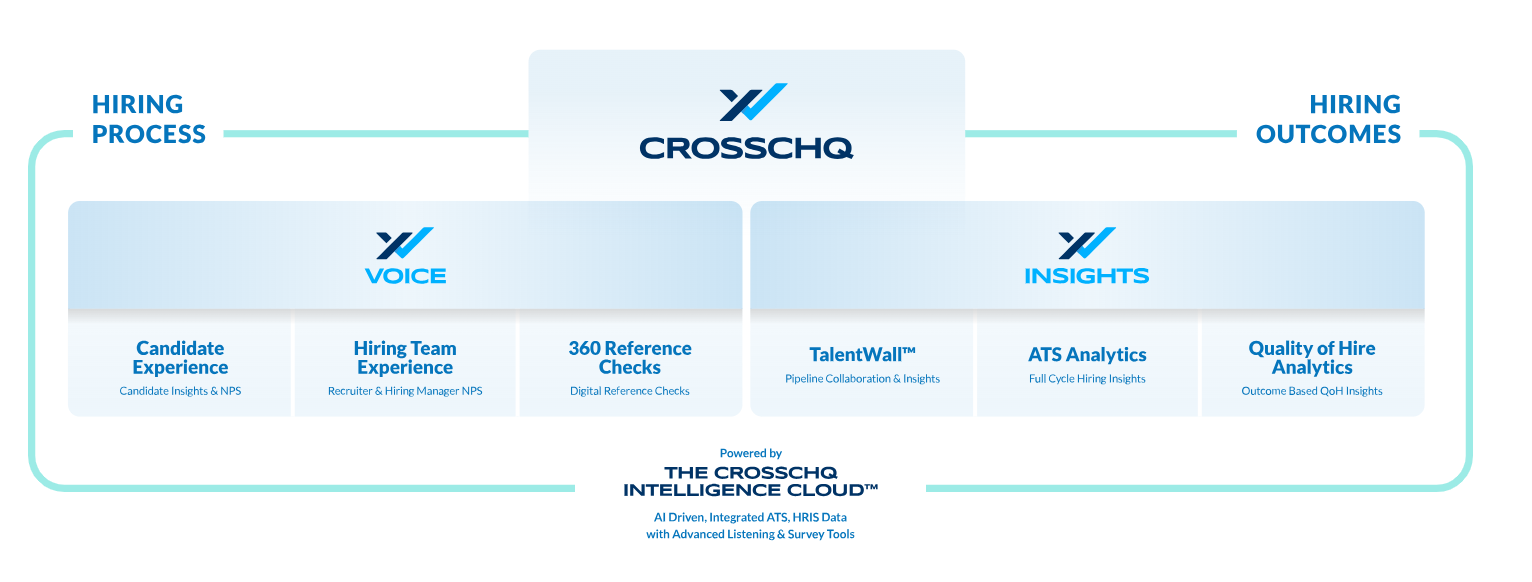Mike Fitzsimmons, Cofounder & CEO of Crosschq, has started four companies and his biggest headache across industries was the same: Making good hires.
Speaking on DisrupTV Episode 331, Fitzsimmons said:
"This is not my first rodeo in starting a tech company, but it is my first one in the HR tech space," said Fitzsimmons. "I started the company with my co-founder out of pure frustration on just how damn hard it is to hire people. You can't hide from the math."
And the math: "45% of the hires at companies never get ROI positive for the companies that made the hire," said Fitzsimmons. "It's insane. It's terrible for talent. Terrible for companies. And it's terrible for everybody."
Crosschq's mission is to make the hiring process linked to outcomes. HR is one of the few corporate functions not linked to outcomes. The Crosschq platform is aimed at increasing the quality of hire, boosting recruiter efficiency and improving hiring intelligence.
Here's the platform in a nutshell:

Fitzsimmons said that since hiring decisions haven’t been tied to an outcome enterprises never get smarter. "We have failed our talent acquisition leaders because we have given them KPIs and goals to put butts in seats quickly," he explained. "We haven't created a machine that enables us to make sure we're putting the right person in the right place every single time."
Indeed, Crosschq, founded in 2018, has struck a nerve. It has more than 400 customers and counts GGVCapital, Bessemer Venture Partners, Slack and SAP among its investors. The company also has integrations with Workday, SAP SuccessFactors, Teamable, Greenhouse, SmartRecruiters, iCIMS and Jobvite to name a few.
Related: Connecting Experiences From Employees to Customers | 7 future of work themes to know now | Coursera: Generative AI will lead to reskilling, upskilling boom | The Lost Art of Being a Supervisor
To improve the hiring process, you need data from every step of the hiring process including:
- Everything known when a hire was made.
- How long did the person last?
- Performance.
- Impact on culture.
- Engagement.
"Breaking all that down has been historically difficult because there's a big wall between talent acquisition and the rest of the organization," said Fitzsimmons. "You have core HCM and then all this stuff scattered around. It's an integration nightmare."
The challenge is to close that talent hiring gap in software and processes. Fitzsimmons said processes can't be understated. For instance, two years ago companies were hiring at a rapid clip and now they're cutting back.
"It's all about data and driving impact. The magic opens up once you start to connect these dots and realize you weren't doing it right all along," he said. HR has been different because it hasn't been performance based. "You can't just spend $20 million on Indeed and not have an idea what that led to in terms of the impact on the company."
The cultural change is creating the connection between ROI and hiring talent. An ROI mindset to hiring talent yields some interesting items, according to Fitzsimmons. Consider the following tips that are sprinkled around Crosschq's blog and reports on hiring talent and quality of hire:
- Understand the ROI of the places where you source talent. For instance, agencies are the most volatile and it's where companies spend the most money. Recruiting agencies will send B-level talent that interviews well because they know they can place them again in 18 months.
- Companies that rely on internal referrals often get lower quality hires. If you remove the financial incentives for internal referrals, the quality of hire goes up.
- There's only a 9% correlation between an interview score and quality of hire. The move is to understand what interviewers are not good predictors of success in the org.
- Only three of the eight standard third party assessments were correlated with success.
- Pay attention to LinkedIn embellishment if not outright fraud. There's a correlation between hires that aren't totally truthful and success.
- Think in terms of progress instead of perfection. It's a journey and connecting the data flows between hiring and outcome is a start. From there, you can build a foundation to improve program optimization, skills and competency and talent selection.


